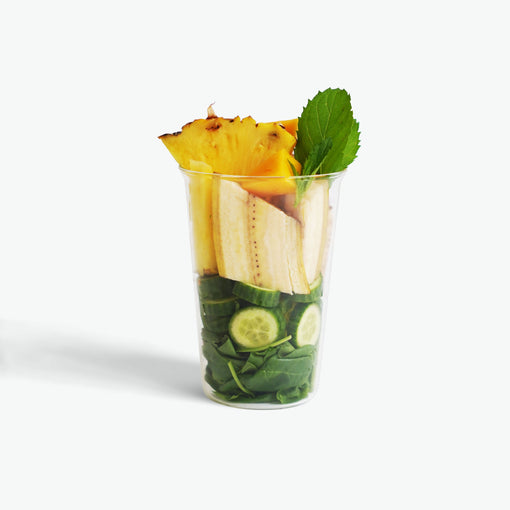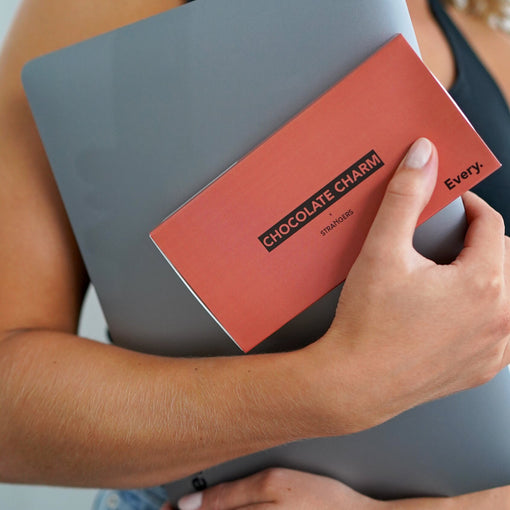Add {{ number }} more products to save {{ price }}
0
Add {{ number }} more products to save {{ price }}
noch 1 Produkt für gratis Versand (spare 5,99€)
Sweet and Nutritious – Our Healthy Dessert Ideas
Why do we actually eat dessert? We’ll explain where the need or desire comes from, and will show you some healthy and delicious alternatives that you can prepare with minimal effort.

Dessert – Saving the best for last
Who doesn’t know the feeling? You’re completely stuffed after your main course, but somehow there’s still room (and a longing) for something sweet to round off the meal. Whether it’s a tiramisu, a classic ice cream sundae or a piece of cake – there’s always room for dessert. But why is that? We’ll explain the reason behind this phenomenon and will equip you with some recipes that will satisfy your sweet tooth without overdoing it.
Contents of this article:
- Where does the term 'dessert' originate from?
- Why do we crave something sweet after a meal?
- Cheese – the perfect dessert or sweetness-killer?
- Ideas for dessert – healthy, vegan and delicious
Where does the term 'dessert' originate from?
To answer this question, we have to travel back to ancient Rome. Back then, it was common to finish a feast with something sweet. A finishing touch, one might say. Back then, traditional desserts consisted of grains, nuts, honey or oil – so very rich ingredients. Dessert therefore served not only as a sweet after taste, but also delivered a significant portion of important nutrients.
But back to the original question: where does the term dessert come from? As you can well imagine, the ancient Romans were not well versed in dinner etiquette or table manners. Even among the rich and noble – uncontrollable food orgies and eating chaos were commonplace. As a result, the servants would simply carry out the table with the remains, and bring in a new one. This table would then be used to serve the dessert (‘’secunda mesa’’). This was the start for dessert.
Why do we crave something sweet after a meal?
Just finished a meal, bursting at the seams, yet dreaming about a chocolate cake? The reasons for this are common, but can vary.
1. Repetition? No, thanks.
Did you know that your body loves variety? Something salty, something fatty, something sweet – a little bit of everything. While you’re eating, eventually a ‘sensory satisfaction’ kicks in which tells you: you’re full. But then why are you thinking about that chocolate cake? Behind this phenomenon is good old evolution. Because only with a diverse diet, can your body get all the different nutrients that it needs. So even though you’ve satisfied your appetite, you haven’t satisfied your sweet craving.
2. Is it just a habit?
Often times, going for that chocolate cake, is in fact just a habit we’ve trained or been conditioned to. No wonder, even as children we were told, if we finish our plates we would be rewarded with a dessert. This habit has been so internalised, that we observe it ourselves, and even pass it on to younger generations. So, now that we know that this also stems from evolution, is that a good thing? Yes and no. The sweets we consume nowadays have virtually nothing in common with the traditional sweets our ancestors ate. Ours have very few nutrients, and don’t do much for us except give us a sugar rush. But if we opt for a fruit salad instead of a chocolate cake, we’re going in the right direction. It really depends what form of dessert you're selecting.
3. A rollercoaster for your blood sugar
Your blood sugar levels also play a significant role. If you frequently consume simple carbohydrates (e.g. plain flour), then you’ve probably noticed that your energy spike is quickly followed by an energy plummet. That’s because your blood sugar spikes and then falls rapidly. The consequence: your brain has to work overtime and constantly craves more energy sources. In these moments, our cravings for chocolate, cookie and co. kick in. These snacks (which are common desserts too) have one thing in common: they all contain sugar. Sugar gets transformed into glucose very easily, and is a prime source of fuel for your brain. To navigate these cravings, you should focus on a more balanced diet and have a colourful plate that consists of complex carbohydrates, proteins, fats, fibre, minerals and vitamins. These will supply you with sufficient energy and will also keep you feeling full for longer. For more helpful information we put together an article on cravings for you.
Cheese – The perfect dessert or sweetness-killer?
Imagine this scenario: you’re sitting in a restaurant. You’ve already eaten your first and main course and now you’re waiting impatiently for your dessert. But instead of a creamy Tiramisu, the waiter places a cheese plate in front of you. Cheese plate for dessert? You might not believe it, but it makes sense! Cheese contains fatty acids that help reduce muscle movement in your intestines and stomach during digestion. This guarantees that the meal stays in your stomach for longer, and you feel full for a longer period, and it curbs your craving for something sweet. You can of course still have something sweet, just pay attention that it’s a somewhat healthy choice with nutrients that your body needs. What a dessert like that looks like, you’ll find out below.
Ideas for dessert – Healthy, vegan and delicious
Cake, chocolate and pudding belong to some of the most popular dessert classics and are unfortunately usually filled with sugar and animal products. But there are better options! Thanks to the plethora of plant based ingredients and sugar alternatives, you can easily make a healthier substitute.
1.Banana bread. A vegan and more nutritious alternative to chocolate cake. Banana bread is rich in fibre and vitamins (e.g. vitamin b6) and minerals (e.g. potassium and magnesium). As a base you’ll need bananas, whole grain flour, nuts, plant based milk and some coconut oil.
2. Energy balls. Want a little energy boosting snack? Then energy balls are your go to. Dates, nuts, chia seeds, coconut flakes and a bit of lemon juice – with this handful of ingredients you can create a nutritious energy-bomb.
3. Chia Pudding. Chia seeds contain a lot of healthy omega 3 fatty acids, iron, protein and minerals (e.g. iron, magnesium, calcium and potassium). They also contain antioxidants, No wonder that chia pudding has gained popularity as a healthy, sweet snack. The preparation is super simple: combine the chia seeds with a milk of your choice and place in the fridge. Then add some muesli or cereal (for some crunch), fruit and berries and voila! Looking for other quick recipe ideas? Then check out our overnight oats article.
4. Zucchini Brownies. Zucchini in a cake? Oh yes! These supply your brownies with an extra juicy consistency. And thanks to their mild taste, you’ll barely notice they’re there. In addition to zucchini, you’ll need whole grain flour, cacao powder, dark chocolate, sunflower oil and baking powder.
5. Raw Cakes. These consist of raw, nutrient rich ingredients like nuts, seeds, oil, and fresh fruit. Their raw/unbaked nature means that the minerals and vitamins are perfectly preserved. Try our three different varieties: Almond Bliss, Moccha Moment and Strawberry Supreme.
6. Fruit salad. A classic among desserts. Not only easy and quick to prepare, but full of vitamins, minerals, trace elements and fibre. Apples, bananas, berries or exotic varieties like mango, pomegranate or passion fruit. You can decide what you want to include. You can also add some yoghurt for some added creaminess.
In conclusion, the desire for a dessert after a wholesome meal can have a variety of reasons. Habit is the most common. As long as you don’t opt for the sugar-rich calorie bomb each time, there’s no problem with having a dessert. Nutritious alternatives that contain fruit, nuts, seeds or yoghurt can actually be good for you!
You'll love these articles as well:
- Hangry – When Hunger Affects Our Mood.
- Healthy Dinner – What's Best for You and Your Body.
- Vegane Eating – Everything You Need to Know.
- Refreshing Hacks – Making Drinking Water Fun.
- Intermittent Fasting – Eating Like Our Ancestors Did.
For even more foodie-content follow us on Instagram and join the Facebook Community to get involved in meal creations and to stay up to date on all things Every.

























